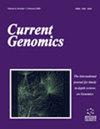不同组织病理学分级口腔鳞状细胞癌患者 EMT 转录调控因子 ZEB1 和 ZEB2 的表达谱分析
IF 1.4
4区 生物学
Q4 BIOCHEMISTRY & MOLECULAR BIOLOGY
引用次数: 0
摘要
背景:巴基斯坦的口腔癌发病率约为 9%,负担沉重。口腔鳞状细胞癌(OSCC)约占口腔癌病例的 90%。上皮细胞向间质转化(EMT)在肿瘤细胞中受到高度刺激,使其具有高侵袭性癌症群体的恶性特征。锌指E-Box结合因子ZEB1和ZEB2是一种调控蛋白,可通过抑制细胞的粘附能力促进EMT转化为高度运动的癌细胞。本研究旨在分析不同等级 OSCC 患者中 EMT 调节因子 ZEB1 和 ZEB2 的表达及其与临床病理特征的关系。研究方法从招募的研究参与者中收集病例组和对照组的组织样本。癌症组织(病例)取自确诊的 OSCC 患者,健康组织(对照)取自第三磨牙拔牙患者。研究人员在征得知情同意和简要的人口统计学和临床特征后被招募。病例组根据癌症组织学分级系统进一步分为分化良好(WD)、中度分化(MD)和分化不良(PD)鳞状细胞癌(SCC)组。从组织样本中提取 RNA,通过定量实时 PCR(qRT-PCR)分析 ZEB1 和 ZEB2 基因的表达情况:所有受试者的平均年龄为(46.55±11.7)岁,大多数人属于乌尔都语族群,已婚。健康参与者的体重指数(千克/平方米)在正常范围内(18-22 千克/平方米)。然而,在癌症的病理状态下,体重指数会随着癌细胞的增殖而降低。患者的口腔卫生比健康参与者好,这可能是由于顾问对口腔卫生的严格要求。每位被招募的 OSCC 患者都有一种或多种成瘾习惯,时间超过一年。患者表示身体虚弱(46.6%)、口腔溃疡未愈合(40%)、吞咽困难和白痕/红痕(80%)以及张口受限(64.4%)。此外,82.2%的患者在1-12个月内出现症状,55.6%的患者口腔黏膜是肿瘤暴露最多的部位。EMT调控因子的表达谱分析显示,ZEB1(8、20和42倍)和ZEB2(4、10和18倍)在各组织学癌症分级中逐渐过度表达。结论ZEBs的高表达与癌症进展和健康状况不佳密切相关。然而,与健康对照组相比,未发现 OSCC 与其他临床病理特征之间存在关联。本文章由计算机程序翻译,如有差异,请以英文原文为准。
Expression Profiling of EMT Transcriptional Regulators ZEB1 and ZEB2 in Different Histopathological Grades of Oral Squamous Cell Carcinoma Patients
Background: Pakistan has a high burden of oral cancers, with a prevalence rate of around 9%. Oral Squamous Cell Carcinoma (OSCC) accounts for about 90% of oral cancer cases. Epithelial to Mesenchymal Transition (EMT) gets highly stimulated in tumor cells by adopting subsequent malignant features of highly invasive cancer populations. Zinc Finger E-Box binding factors, ZEB1 and ZEB2, are regulatory proteins that promote EMT by suppressing the adherent ability of cells transforming into highly motile cancerous cells. The present study aimed to analyze the expression of EMT regulators, ZEB1 and ZEB2, and their association with the clinicopathological features in different grades of OSCC patients. Methods: Tissue samples were collected for both case and control groups from the recruited study participants. Cancer tissues (cases) were collected from the confirmed OSCC patients, and healthy tissues (controls) were collected from third-molar dental extraction patients. The study participants were recruited with informed consent and brief demographic and clinical characteristics. The case group was further segregated with respect to the histological cancer grading system into well-differentiated (WD), moderately differentiated (MD), and poorly differentiated (PD) squamous cell carcinoma (SCC) groups. RNA was extracted from the tissue samples for expression profiling of ZEB1 and ZEB2 genes through quantitative real-time PCR (qRT-PCR) Results: All of the recruited participants had a mean age of 46.55 ± 11.7 (years), with most of them belonging to Urdu speaking ethnic group and were married. The BMI (kg/m2 ) of the healthy participants was in the normal range (18-22 kg/m2 ). However, BMI was found to be reduced with the proliferation in the pathological state of cancer. The oral hygiene of patients was better than the healthy participants, possibly due to the strict oral hygiene practice concerns of consultants. Every recruited OSCC patient had one or multiple addiction habits for more than a year. Patients reported health frailty (46.6%), unhealed mouth sores (40%), swallowing difficulties and white/reddish marks (80%), and restricted mouth opening (64.4%). Furthermore, 82.2% of the recruited patients observed symptoms within 1-12 months, and buccal mucosa was the most exposed tumor site among 55.6% of the patients. Expression profiling of EMT regulators showed gradual over-expressions of ZEB1 (8, 20, and 42 folds) and ZEB2 (4, 10, and 18 folds) in respective histological cancer grades. Conclusion: High expressions of ZEBs have been significantly associated with cancer progression and poor health. However, no association was found between OSCC with other clinicopathological features when compared to healthy controls
求助全文
通过发布文献求助,成功后即可免费获取论文全文。
去求助
来源期刊

Current Genomics
生物-生化与分子生物学
CiteScore
5.20
自引率
0.00%
发文量
29
审稿时长
>0 weeks
期刊介绍:
Current Genomics is a peer-reviewed journal that provides essential reading about the latest and most important developments in genome science and related fields of research. Systems biology, systems modeling, machine learning, network inference, bioinformatics, computational biology, epigenetics, single cell genomics, extracellular vesicles, quantitative biology, and synthetic biology for the study of evolution, development, maintenance, aging and that of human health, human diseases, clinical genomics and precision medicine are topics of particular interest. The journal covers plant genomics. The journal will not consider articles dealing with breeding and livestock.
Current Genomics publishes three types of articles including:
i) Research papers from internationally-recognized experts reporting on new and original data generated at the genome scale level. Position papers dealing with new or challenging methodological approaches, whether experimental or mathematical, are greatly welcome in this section.
ii) Authoritative and comprehensive full-length or mini reviews from widely recognized experts, covering the latest developments in genome science and related fields of research such as systems biology, statistics and machine learning, quantitative biology, and precision medicine. Proposals for mini-hot topics (2-3 review papers) and full hot topics (6-8 review papers) guest edited by internationally-recognized experts are welcome in this section. Hot topic proposals should not contain original data and they should contain articles originating from at least 2 different countries.
iii) Opinion papers from internationally recognized experts addressing contemporary questions and issues in the field of genome science and systems biology and basic and clinical research practices.
 求助内容:
求助内容: 应助结果提醒方式:
应助结果提醒方式:


